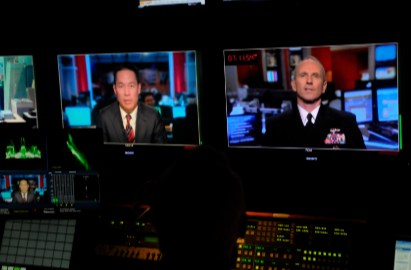The dynamics of breaking news have evolved significantly with the advent of technology. Algorithms play a pivotal role in determining which stories gain traction. Emotional triggers are often exploited to capture attention and foster engagement. This raises questions about the quality of information consumed. As urgency drives choices, the potential for misinformation looms large. Understanding these factors is crucial to navigate the complexities of modern news cycles effectively. What implications does this have for public perception and discourse?
The Role of Algorithms in News Distribution
Algorithms play a pivotal role in the modern landscape of news distribution, shaping how information reaches audiences. They enable news personalization, tailoring content based on user preferences.
However, algorithm bias can distort this process, potentially limiting exposure to diverse viewpoints. This raises concerns about the implications for informed decision-making, as audiences may only receive news that aligns with their existing beliefs and preferences.
Emotional Triggers That Drive Engagement
What elements compel audiences to engage with news content?
Emotional triggers play a vital role, particularly fear appeals and sensational headlines.
These tactics evoke strong reactions, prompting individuals to click, share, and discuss.
The Impact of Social Media on News Consumption
The influence of social media on news consumption has transformed how audiences access and engage with information.
Users navigate a landscape dominated by viral trends, often leading to information overload. This rapid dissemination can create a sense of urgency, as breaking news emerges in real time.
Consequently, individuals face challenges discerning credible sources amidst a barrage of updates, impacting their overall news experience.
The Psychology of Urgency and Attention
How does the psychology of urgency influence attention in today’s fast-paced information environment?
The constant barrage of breaking news fosters cognitive overload, limiting individuals’ ability to focus. This urgency taps into attention scarcity, compelling audiences to prioritize immediate information over deeper understanding.
Consequently, the relentless pursuit of the latest updates diminishes critical thinking, leaving audiences vulnerable to misinformation and superficial narratives.
Conclusion
In conclusion, the intricate dynamics of breaking news reveal a landscape where algorithms act as gatekeepers, shaping public discourse much like a conductor directs an orchestra. Emotional triggers amplify engagement, while the immediacy of social media transforms consumption patterns. However, this rapid-fire dissemination poses risks, as critical analysis often takes a backseat to sensationalism. Ultimately, the challenge lies in balancing the need for timely information with the imperative of ensuring informed public understanding amidst a sea of competing narratives.
